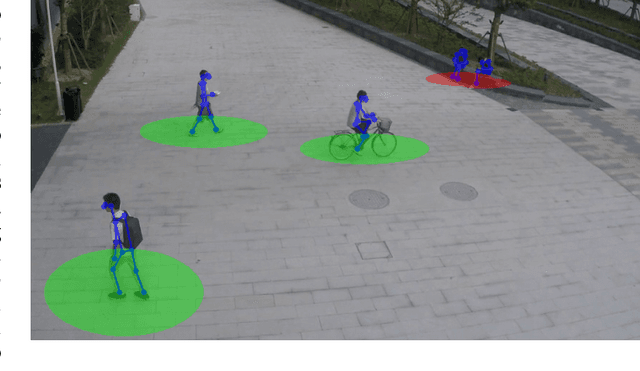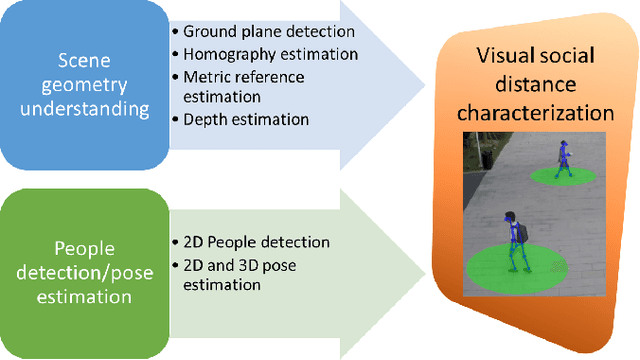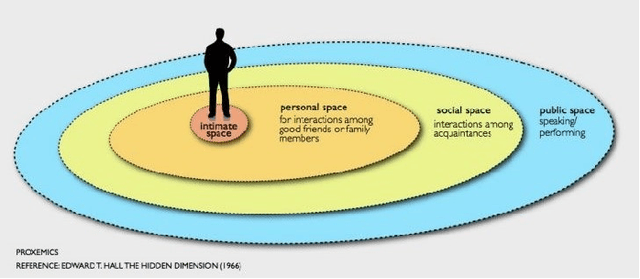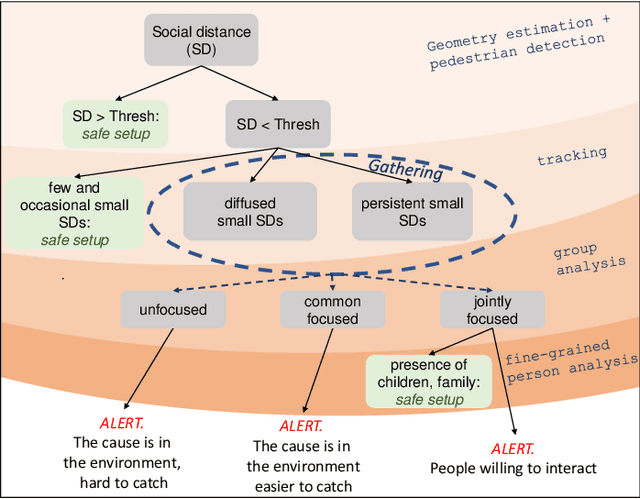The Visual Social Distancing Problem
Paper and Code
May 11, 2020



One of the main and most effective measures to contain the recent viral outbreak is the maintenance of the so-called Social Distancing (SD). To comply with this constraint, workplaces, public institutions, transports and schools will likely adopt restrictions over the minimum inter-personal distance between people. Given this actual scenario, it is crucial to massively measure the compliance to such physical constraint in our life, in order to figure out the reasons of the possible breaks of such distance limitations, and understand if this implies a possible threat given the scene context. All of this, complying with privacy policies and making the measurement acceptable. To this end, we introduce the Visual Social Distancing (VSD) problem, defined as the automatic estimation of the inter-personal distance from an image, and the characterization of the related people aggregations. VSD is pivotal for a non-invasive analysis to whether people comply with the SD restriction, and to provide statistics about the level of safety of specific areas whenever this constraint is violated. We then discuss how VSD relates with previous literature in Social Signal Processing and indicate which existing Computer Vision methods can be used to manage such problem. We conclude with future challenges related to the effectiveness of VSD systems, ethical implications and future application scenarios.
 Add to Chrome
Add to Chrome Add to Firefox
Add to Firefox Add to Edge
Add to Edge